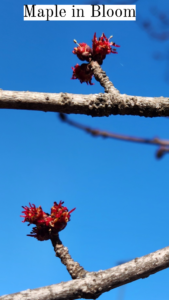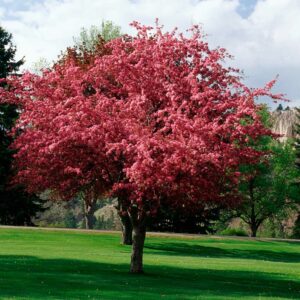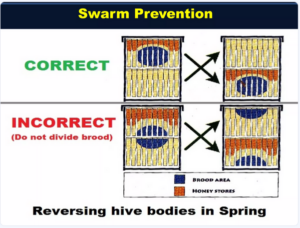What Should I Be Doing in My Apiary This Month? February
go.ncsu.edu/readext?1053227
en Español / em Português
El inglés es el idioma de control de esta página. En la medida en que haya algún conflicto entre la traducción al inglés y la traducción, el inglés prevalece.
Al hacer clic en el enlace de traducción se activa un servicio de traducción gratuito para convertir la página al español. Al igual que con cualquier traducción por Internet, la conversión no es sensible al contexto y puede que no traduzca el texto en su significado original. NC State Extension no garantiza la exactitud del texto traducido. Por favor, tenga en cuenta que algunas aplicaciones y/o servicios pueden no funcionar como se espera cuando se traducen.
Português
Inglês é o idioma de controle desta página. Na medida que haja algum conflito entre o texto original em Inglês e a tradução, o Inglês prevalece.
Ao clicar no link de tradução, um serviço gratuito de tradução será ativado para converter a página para o Português. Como em qualquer tradução pela internet, a conversão não é sensivel ao contexto e pode não ocorrer a tradução para o significado orginal. O serviço de Extensão da Carolina do Norte (NC State Extension) não garante a exatidão do texto traduzido. Por favor, observe que algumas funções ou serviços podem não funcionar como esperado após a tradução.
English
English is the controlling language of this page. To the extent there is any conflict between the English text and the translation, English controls.
Clicking on the translation link activates a free translation service to convert the page to Spanish. As with any Internet translation, the conversion is not context-sensitive and may not translate the text to its original meaning. NC State Extension does not guarantee the accuracy of the translated text. Please note that some applications and/or services may not function as expected when translated.
Collapse ▲February in North Carolina might be considered the beginning of the beekeeping season, at least in most areas of the state. The maples should start to bloom, as well as some of the ornamental fruit trees. This may happen in early February for the eastern part of the state but may not be until the end of the month for the western counties. This does not mean that winter is over, or that you can stop worrying about whether your bees have made it through the winter. There will still be cold spells where the bees will need to cluster, and if they don’t have enough food, they can still starve. Once the maples start blooming, and the pollen begins to come in on a regular basis, the queen will begin laying more eggs. With more brood present, more food will be necessary, thus it is critical to pay attention to the food stores. As the population builds up and they begin consuming stores more quickly, it is possible to run out during one of these cold snaps. Continue monitoring by gently picking up one side of the hive to see if it is heavy or light. If it is easy to lift, it may need some extra feed to ensure the bees survive until the temperatures are more consistently warm and the nectar flow begins.
season, at least in most areas of the state. The maples should start to bloom, as well as some of the ornamental fruit trees. This may happen in early February for the eastern part of the state but may not be until the end of the month for the western counties. This does not mean that winter is over, or that you can stop worrying about whether your bees have made it through the winter. There will still be cold spells where the bees will need to cluster, and if they don’t have enough food, they can still starve. Once the maples start blooming, and the pollen begins to come in on a regular basis, the queen will begin laying more eggs. With more brood present, more food will be necessary, thus it is critical to pay attention to the food stores. As the population builds up and they begin consuming stores more quickly, it is possible to run out during one of these cold snaps. Continue monitoring by gently picking up one side of the hive to see if it is heavy or light. If it is easy to lift, it may need some extra feed to ensure the bees survive until the temperatures are more consistently warm and the nectar flow begins.
Full inspections are not necessary, but on warm days it is acceptable to crack open the lid and peek inside. If the daytime temperature is in the 70s, it may even be acceptable to pull up a frame or two for a very quick look to evaluate the health of the colony. This should be done rather quickly, as the brood can get chilled if the colony is left open too long (more than 30 seconds). If you are going to check the colony, here are some of the things you should be paying attention to. Check for open brood and notice the appearance of the larvae. If it is healthy, it should appear pearly white. If there is capped brood, how many frames? Is there a good brood pattern? If there is no open or capped brood, do you see eggs? If there is no sign of a queen, close it up and check again in a few weeks since it may be too early in the season for the queen to begin laying. If it is indeed queenless, there is not much that you can do at this time anyway. Give it a few more weeks, and if there is still no sign of a queen, it may be best to combine this colony with another queenright colony. It can always be split later in the spring to increase numbers if desired.
Unless it becomes unseasonably warm, it is still a bit too early to rotate boxes. If there is a day warm enough to do an inspection, it may be that you find all the bees in the top box and very few or no bees in the bottom box. It is common practice to swap these around (called “reversing”) so most of the population is in the bottom box and they can more readily move up in the brood nest. However, since winter may not be over yet, it may be better to leave everything in place for a while longer. One problem that arises when reversing too early is splitting up the brood nest. If the brood is partially in the top box and partially in the bottom box, when splitting and reversing, the two halves of the spherical brood nest are now going to be far apart from each other. If the temperatures dip and the bees need to cluster, they will not be able to cover and incubate the entire brood nest since it is so spread out. The result will be chilled brood, which the workers will clean out when it warms up, but it wastes a lot of energy and can really set back the growth of the colony.
It is also too early in most of the state to make splits. By the end of the month, drone brood and some adult drones should be seen in the colonies, but they may not be plentiful enough or mature enough to mate. Also, if the weather turns bad for an extended period, virgin queens will not be able to go out on their mating flights. As a beekeeper, your chances greatly increase if you wait until mid-March or whenever the daytime temperatures are more consistent.
Hopefully you have a plan ready for the upcoming season. Have a few goals outlining how many hives you aim to have and how you plan to use them, whether it is for honey, pollination, queen rearing, or making more colonies of bees. Having a plan will help guide your management practices for the season. This will also help you to plan how much equipment you will need and go ahead and place your orders early so you will be prepared once the season is here.
If you have boxes of drawn comb stored from last season, it may be time to start thinking about how you plan to use it this year. First, you might want to check the condition of the comb to make sure the wax moths or mice didn’t find it over the winter. This is a good time to go through each frame and cull out any that doesn’t look good or any that have the aged, black wax. If the combs were stored using Paramoth or any other moth crystals, the frames will need to be aired out before putting them onto a colony of bees. Make you plan for this now so you have everything ready when spring is truly upon us.
February may start off slow, but by the end of the month the bees will be in high gear, which means as beekeepers, we will be busy, too.




